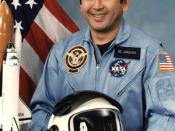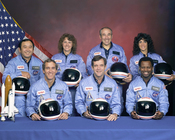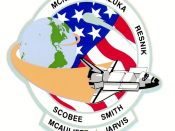The shuttle, a manned, multipurpose, orbital-launch space plane, was designed to carry payloads of up to about 30,000 kg (65,000 lb) and up to seven crew members and passengers. The upper part of the spacecraft, the orbiter stage, had a theoretical lifetime of perhaps 100 missions, and the winged orbiter could make unpowered landings on returning to earth. Because of the shuttle's designed flexibility and its planned use for satellite deployment and the rescue and repair of previously orbited satellites, its proponents saw it as a major advance in the practical exploitation of space. Others, however, worried that NASA was placing too much reliance on the shuttle, to the detriment of other, unmanned vehicles and missions.
The first space shuttle mission, piloted by John W. Young and Robert Crippen aboard the orbiter Columbia, was launched on April 12, 1981. It was a test flight flown without payload in the orbiter's cargo bay.
The fifth space shuttle flight was the first operational mission; the astronauts in the Columbia deployed two commercial communications satellites from November 11 to 16, 1982. Later memorable flights included the seventh, whose crew included the first U.S. woman astronaut, Sally K. Ride; the ninth mission, November 28-December 8, 1983, which carried the first of the European Space Agency's Spacelabs; the 11th mission, April 7-13, 1984, during which a satellite was retrieved, repaired, and redeployed; and the 14th mission, November 8-14, 1984, when two expensive malfunctioning satellites were retrieved and returned to earth.
Despite such successes, the shuttle program was falling behind in its planned launch program, was increasingly being used for military tests, and was meeting stiff competition from the European Space Agency's unmanned Ariane program for the orbiting of satellites. Then, on January 28, 1986, the shuttle Challenger was destroyed about one minute after launch because...


